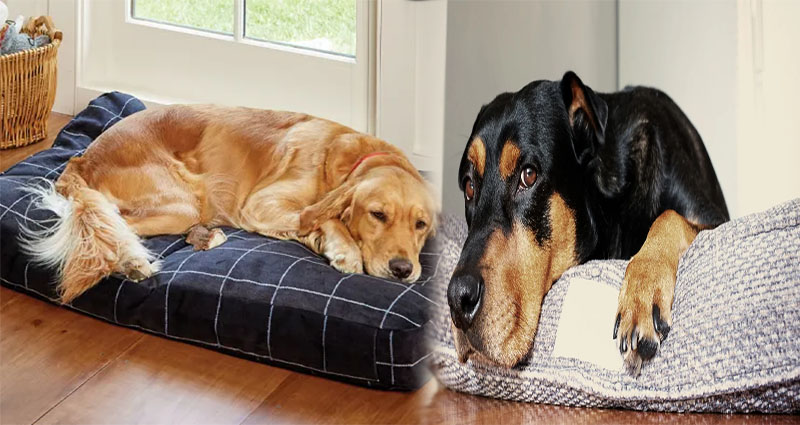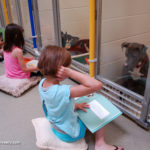If your dog is a large breed, he will benefit from a bed that’s designed to support his weight. Good dog beds also help prevent common joint issues, such as hip dysplasia and osteoarthritis.
But picking the best large dog bed can be difficult. Here are some tips to help you narrow your search.
1. Try to Pick a Bed with a Solid Sheet of Memory Foam
When it comes to picking a bed, you want to find one that has a solid sheet of memory foam. These beds offer a combination of pressure-relieving comfort and firm support that can help your dog feel better throughout the day.
You should also avoid beds with a mix of shredded foam and cotton batting. These tend to be of inferior quality and will not last as long as a bed with a solid sheet of memory foam.
Memory foam conforms to the shape of your dog’s body and distributes their weight evenly. It is a great choice for older dogs and those with medical issues like arthritis or hip dysplasia.
In addition to a solid sheet of memory foam, you should consider a bed with an easy- to-clean cover. This is important because dogs often eat treats, vomit, pass gas, scratch, and wipe ointment on their beds.
2. Look for Models That Offer Orthopedic Support
Whether you have a puppy or an older dog, orthopedic beds can help improve their comfort and overall quality of life. They take away painful pressure points, promote even weight distribution, and help reduce stress on the joints.
The best orthopedic dog beds are made with memory foam, which conforms to your dog’s body and keeps its shape when it gets up. Orthopedic dog beds are often more expensive than non-memory foam models, but they will offer your pet much more support and comfort.
Many orthopedic beds are also layered with cotton or polyfill to provide additional comfort. But this material doesn’t always offer the level of support that large dogs need to feel comfortable in their beds.
Instead, look for orthopedic beds that have softer foam or polyester filling. These materials offer more give, which is ideal for thinner dogs that don’t have the natural cushioning of plump thighs and butts.
3. Look for Models That Are Easy to Clean
It is no secret that the best way to keep your model ships looking as good as new is to clean them regularly. Dust is a top contributor to discoloration and can cause mold, mildew, and corrosion over time. Using a high-tech air cleaning system or a well-placed hand shake or two should help keep your model looking its best. If that isn’t in the cards, a good scrubbing with soap and water should do the trick.
Similarly, a few swipes of the right kind of rag will do wonders. And while you are at it, a few squirts of your favorite spray bottle of hairspray will also do the trick.
4. Look for Models That Are Suitable for Large Dogs
If you want your dog to get into pet modeling, it is important that they are able to work with the camera. This requires a lot of practice and can be exhausting for your pet, so make sure that they are comfortable with the process.
It is also important that you are able to make your dog feel safe and secure during the shoot. You may have to invest in some additional equipment, such as a dog bed that is big enough for your dog to fit comfortably into.
While dogs can definitely be successful in the industry, it isn’t a guarantee. You should also consider your dog’s personality and how they work best in front of a camera. This can help you decide if modeling is the right career choice for your pet. If it isn’t, it might be best to consider other options instead. This can help you save time and money in the long run.












